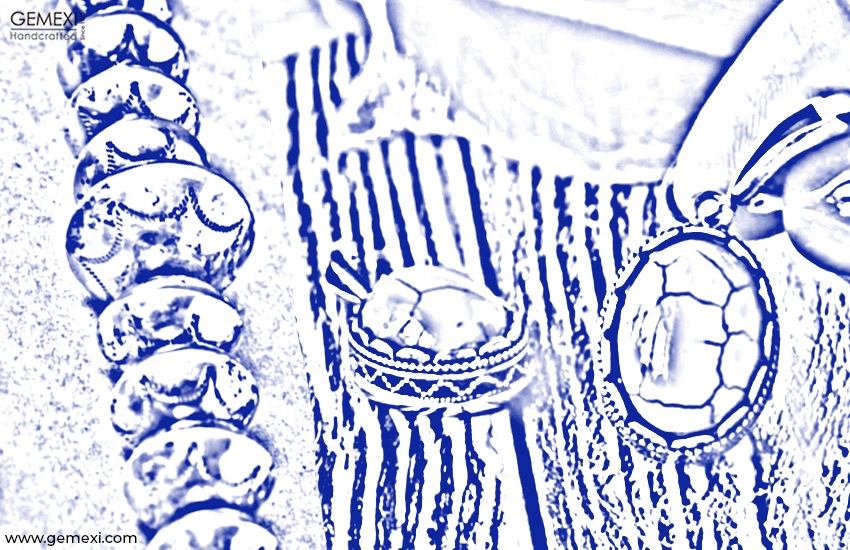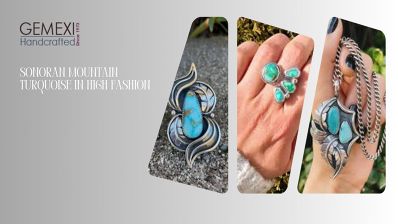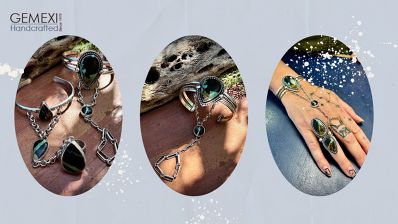The History and Making Process of Navajo Pearls
By Gemexi Team | Turquoise- Updated On Jul 1, 2023

The Allure of History
Navajo Pearls, often considered the quintessential jewelry of the Southwestern Native American tribes, have a deep-rooted history intertwined with the Navajo people's traditions, beliefs, and lifestyle. These unique pieces of jewelry, characterized by their handcrafted silver beads, not only hold aesthetic appeal but are also a symbol of the Navajo people's rich heritage and skilled craftsmanship.
The Navajo tribe, also known as the Diné, has resided in the Southwestern United States for centuries, primarily in areas now known as Arizona, New Mexico, and Utah. They are the largest federally recognized Native American tribe in the United States, widely respected for their unique culture, language, and artistic traditions.
The art of silversmithing among the Navajo didn't begin until the late 1850s. At that time, a Navajo blacksmith named Atsidi Sani, often referred to as the first Navajo silver smith, learned the art from a Mexican craftsman. Navajo silversmithing initially revolved around the creation of practical items such as buckles, bridle decorations, and hair ornaments. However, as the craft evolved, the Navajo artists began making more intricate and ornamental pieces, with the creation of Navajo pearls gaining prominence over time.
The Navajo tribe, also known as the Diné, has resided in the Southwestern United States for centuries, primarily in areas now known as Arizona, New Mexico, and Utah. They are the largest federally recognized Native American tribe in the United States, widely respected for their unique culture, language, and artistic traditions.
The art of silversmithing among the Navajo didn't begin until the late 1850s. At that time, a Navajo blacksmith named Atsidi Sani, often referred to as the first Navajo silver smith, learned the art from a Mexican craftsman. Navajo silversmithing initially revolved around the creation of practical items such as buckles, bridle decorations, and hair ornaments. However, as the craft evolved, the Navajo artists began making more intricate and ornamental pieces, with the creation of Navajo pearls gaining prominence over time.
The Making Process of Navajo Pearls
The production of Navajo pearls is an intricate process that requires exceptional skill, patience, and attention to detail. The creation of each bead is a labor-intensive task that includes several stages, including melting, molding, stamping, filing, oxidizing, polishing, and stringing.
The process begins with melting silver from coins, flatware, or ingots in a crucible until it becomes malleable. The molten silver is then poured into a mold to create a cylindrical rod. Once the silver rod cools, it's placed into a rolling mill to flatten it to the desired thickness.
The next step involves cutting the flattened silver into small discs. These discs are then domed in a process known as dapping, creating two halves of a bead. The silversmith meticulously matches these halves and carefully solders them together using a small torch, leaving a small hole for stringing.
After the bead is formed, it goes through a filing process to remove any irregularities and ensure a smooth surface. Some beads are stamped with intricate traditional Navajo designs, while others are left plain to highlight their natural beauty.
Following this, the beads are oxidized, a process that involves submerging them into a solution that darkens the silver to bring out its antique appearance. After oxidization, the beads are polished to enhance their luster.
Finally, the beads are strung together using a thin wire or cord singly or multiple to create a necklace. The resulting product is a strand of Navajo pearls, each bead uniquely handcrafted, carrying the time-honored traditions and stories of the Navajo people.
The process begins with melting silver from coins, flatware, or ingots in a crucible until it becomes malleable. The molten silver is then poured into a mold to create a cylindrical rod. Once the silver rod cools, it's placed into a rolling mill to flatten it to the desired thickness.
The next step involves cutting the flattened silver into small discs. These discs are then domed in a process known as dapping, creating two halves of a bead. The silversmith meticulously matches these halves and carefully solders them together using a small torch, leaving a small hole for stringing.
After the bead is formed, it goes through a filing process to remove any irregularities and ensure a smooth surface. Some beads are stamped with intricate traditional Navajo designs, while others are left plain to highlight their natural beauty.
Following this, the beads are oxidized, a process that involves submerging them into a solution that darkens the silver to bring out its antique appearance. After oxidization, the beads are polished to enhance their luster.
Finally, the beads are strung together using a thin wire or cord singly or multiple to create a necklace. The resulting product is a strand of Navajo pearls, each bead uniquely handcrafted, carrying the time-honored traditions and stories of the Navajo people.
The Legacy Continues
While the process of making Navajo pearls has modernized somewhat due to technological advancements, the essential steps and the commitment to handmade artistry remain unchanged. Today, Navajo pearls are considered timeless and versatile pieces of jewelry, valued for their aesthetic appeal and the rich cultural history they symbolize.
In contemporary times, Navajo pearls continue to be highly sought after, symbolizing the resilience and creativity of the Navajo people. They stand as testaments to the enduring artistry and craftsmanship of the Navajo, ensuring that their ancient traditions and storytelling continue to be celebrated and passed down through generations.
In contemporary times, Navajo pearls continue to be highly sought after, symbolizing the resilience and creativity of the Navajo people. They stand as testaments to the enduring artistry and craftsmanship of the Navajo, ensuring that their ancient traditions and storytelling continue to be celebrated and passed down through generations.










0 Comments
Write Comments